Color displays
Color monitors for desktop microcomputers are based on cathode ray tubes (CRTs) or back-lighted flat-screen technologies. Because monitors transmit light, displays use the red-green-blue (RGB) additive color model. The RGB model is called "additive" because a combination of the three pure colors red, green, and blue "adds up" to white light:
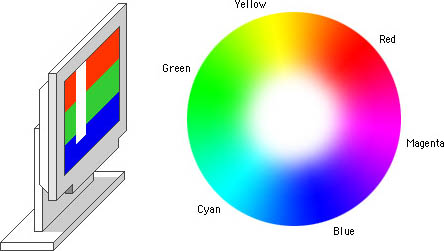
The computer's operating system organizes the display screen into a grid of x and y coordinates, like a checkerboard. Each little box on the screen is called a "pixel" (short for "picture element"). Current Macintosh and Windows displays are composed of these grids of pixels.
Pixels and color depth
To control the color of each pixel on the screen, the operating system must dedicate a small amount of memory to each pixel. In aggregate this memory dedicated to the display screen is often referred to as "video RAM" or "VRAM" (Video Random Access Memory). In the simplest form of black-and-white computer displays, a single bit of memory is assigned to each pixel. Because each memory bit is either positive or negative (0 or 1), a 1-bit display system can manage only two colors (black or white) for each pixel on the screen:
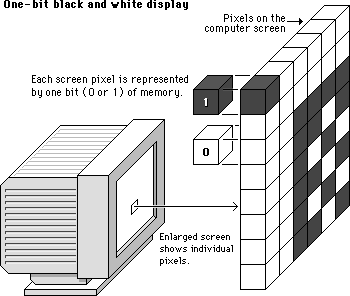
If more bits of memory are dedicated to each pixel in the display, more colors can be managed. When 8 bits of memory are dedicated to each pixel, each pixel could be one of 256 colors. (256 = 2 to the eighth power; in other words, 256 is the maximum number of unique combinations of zeros and ones you can make with 8 bits.) This kind of computer display is called an "8-bit" or "256-color" display, and is common on older laptop computers and desktop machines. Although the exact colors that an 8-bit screen can display are not fixed, there can never be more than 256 unique colors on the screen at once:
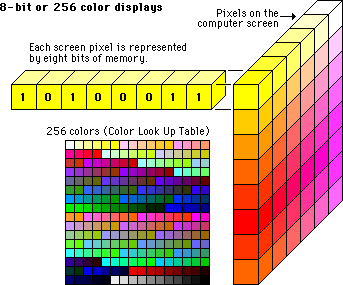
If still more memory is dedicated to each pixel, nearly photographic color is achievable on the computer screen. "True-color" or "24-bit" color displays can show millions of unique colors simultaneously on the computer screen. True-color images are composed by dedicating 24 bits of memory to each pixel; 8 each for the red, green, and blue components (8 + 8 + 8 = 24):
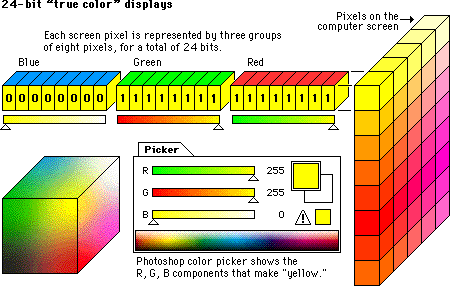
The amount of VRAM dedicated to each screen pixel in the display is commonly referred to as the "color depth" of the monitor. Most Macintosh and Windows microcomputers sold in recent years can easily display color depths in thousands (16-bit) or millions (24-bit) of simultaneous colors. To check your computer system for the range of color depths available to you, use the "Display" control panel (Windows) or the "Monitors" control panel (Macintosh):
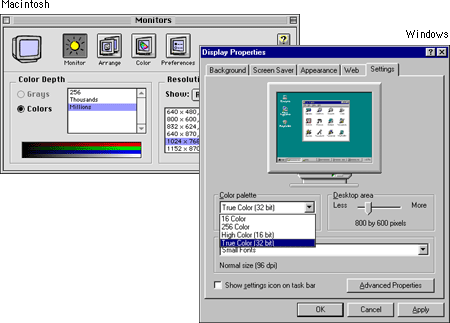
Color depth and graphics files
The terminology and memory schemes used in color displays are directly analogous to those used to describe color depth in graphics files. In their uncompressed states, 8-bit, or 256-color, image files dedicate 8 bits to each color pixel in the image. In 8-bit images the 256 colors that make up the image are stored in an array called a "palette" or an "index." The color palette may also be referred to as a "color lookup table" (CLUT). As mentioned above, 8-bit images can never contain more than 256 unique colors:
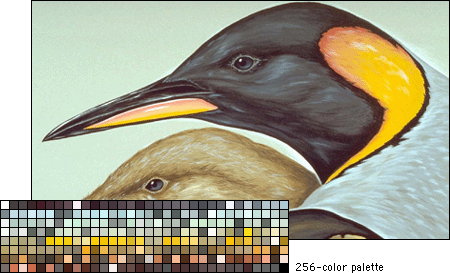
True-color, or 24-bit, images are typically much larger than 8-bit images in their uncompressed state, because 24 bits of memory are dedicated to each pixel, typically arranged in three monochrome layers — red, green, and blue:
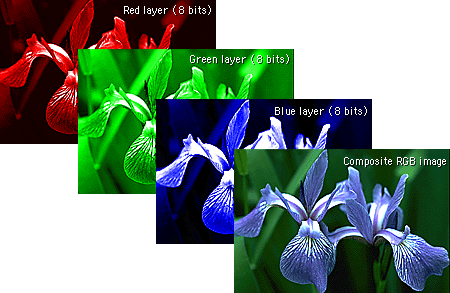
| 